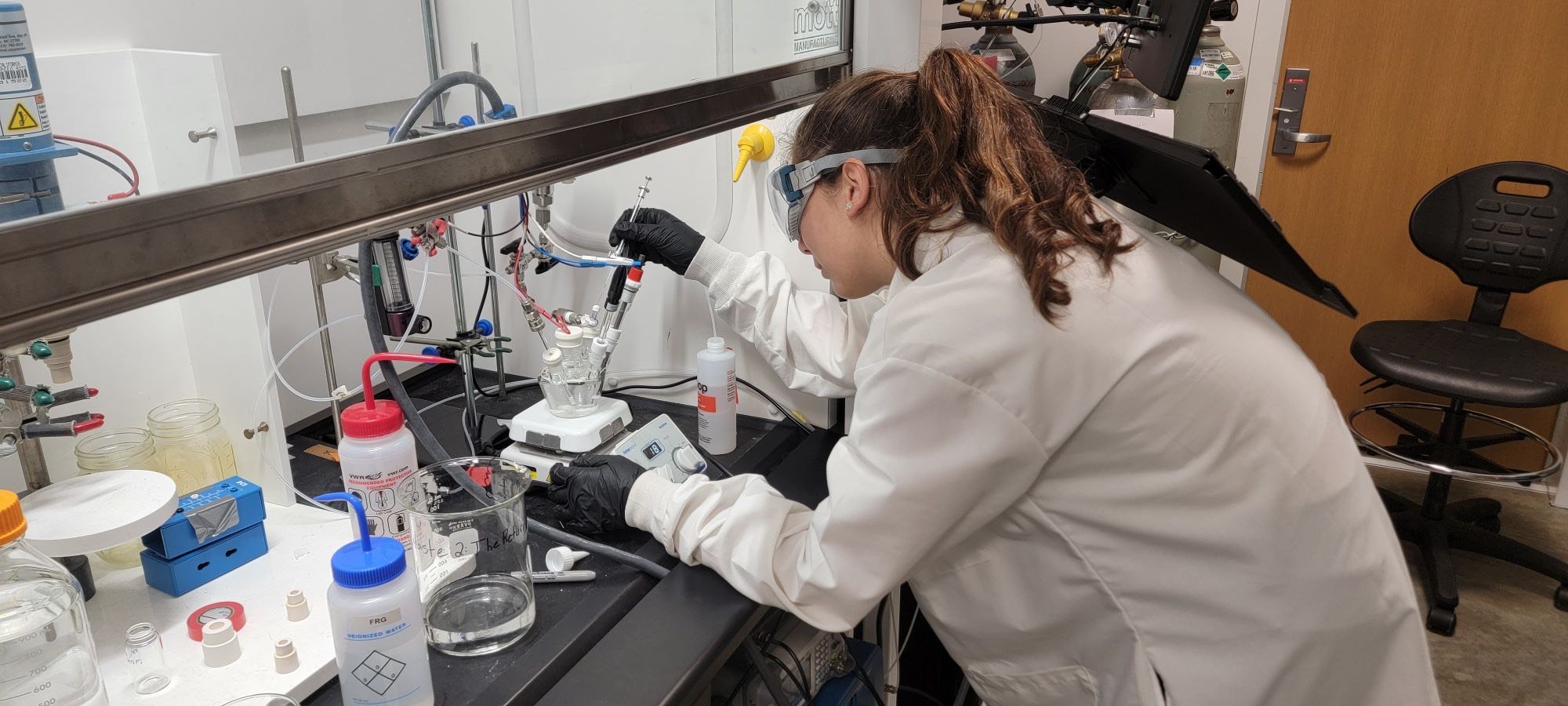
June - August 2024
Participated in the UC San Diego MRSEC (Materials Research Science and Engineering Center) program provides full-time summer undergraduate research opportunities at the forefront of materials science and engineering.
Abstract: Through electrocatalysis, which involves reactions occurring at the surface of the electrode, water splitting yields hydrogen. By leveraging the intrinsic polarization of ferroelectric perovskite (BTO) and switching the polarization using switching pulses to modulate the binding energy, this research aims to create an environment with optimal hydrogen binding energies to increase the reaction rate past the Sabatier limit. This approach may also enhance nitrogen reduction (N2RR). The goal of this experiment is to determine whether there is a measurable difference in reaction outcomes between experiments using nitrogen (N2) or argon (Ar), in order to evaluate the impact of competitive N2RR on hydrogen evolution reaction (HER). Dynamic catalysis is performed on a ferroelectric heterostructure. The results will be measured using gas chromatography to quantify the amount of hydrogen produced under N2 and Ar conditions.

As my summer at UC San Diego came to a close, I am honored to have been a part of Prof. Pascal's amazing research. My research presentation on "Evaluating N2 vs Ar Purging for Hydrogen Reduction on a Dynamic Catalyst" secured 1st place at the UC San Diego undergraduate research conference for MRSEC's school of predictive assembly.
As it stands, a major challenge to the broader adoption of water electrolysis (WE) is the limited availability and high cost of platinum group metals (PGMs), which are crucial for catalyzing the key reactions involved: the hydrogen evolution reaction (HER) at the cathode and the oxygen evolution reaction (OER) at the anode. The Sabatier volcano plot for HER demonstrates that if the binding energy is too high, it becomes difficult for the molecules to detach from the catalyst surface, while a lower binding energy makes it harder for them to attach, both of which can slow down the reaction rate. With dynamic catalysis, we changed binding energy at the catalyst’s surface to enhance the reaction rate.
This summer I conducted dynamic catalysis on our system under N2 and Ar purging to quantify if there is a difference in hydrogen production. It is thought the Nitrogen Reduction Reaction (NRR) competes with HER in aqueous media. Through this research I used a potentiostat, waveform generator, electrodes, and gas chromatography to begin proving the differences.




